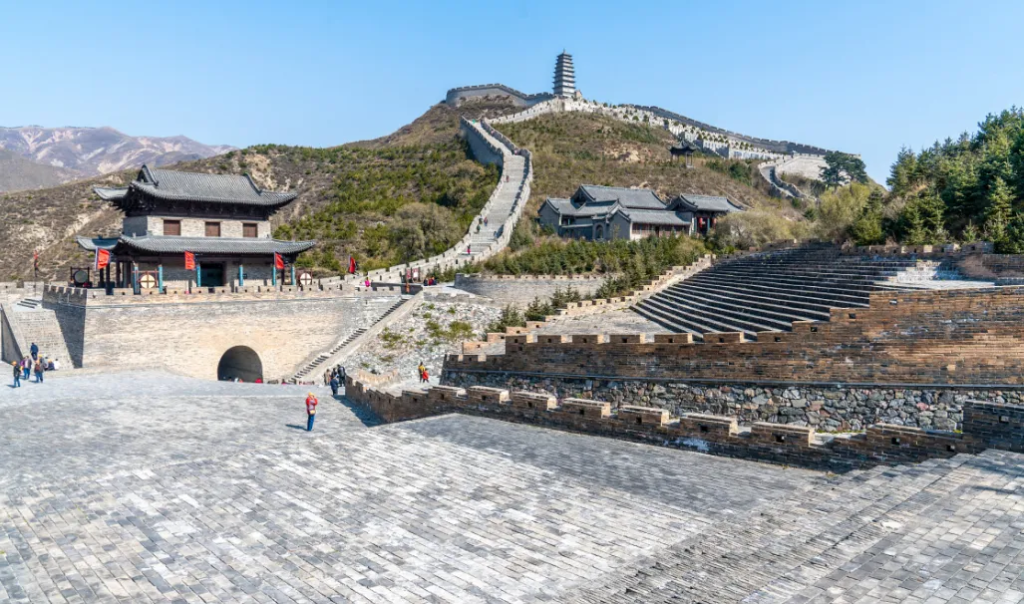Shanxi is the cradle of Chinese civilization, known as the “Museum of Ancient Chinese Culture” and the “Land of Literature.”For many, Shanxi is an enigmatic place, but once you explore it, you’ll discover it’s a treasure trove. The attractions in Shanxi are quite dispersed and the distances between them are significant. This guide is all you need for an enjoyable trip to Shanxi!
Must-visit attractions in Shanxi include: Wutai Mountain, Yungang Grottoes, Hukou Waterfall, Pingyao Ancient City, Qiao’s Compound, Yanmen Pass, Hanging Temple, Jinci Temple, and the Ancient County Town of Taiyuan. Each of these places boasts unique charm and stunning scenery that will leave visitors enchanted.
01、Wutai Mountain
Wutai Mountain, one of China’s Four Sacred Buddhist Mountains and one of the world’s five major Buddhist sites, is a must-visit in Shanxi. During the summer, it attracts countless tourists and pilgrims who come to explore, sightsee, and pay their respects.
Location: Wutai Mountain, also known as Qingliang Mountain, is situated in the northeastern part of Wutai County, Shanxi. It is the foremost among China’s Four Sacred Buddhist Mountains, referred to as “Golden Wutai.” Surrounded by five peaks, it is also called “Wutai Mountain.” Legend has it that this is the sacred site of Manjushri Bodhisattva. Wutai Mountain uniquely features both Qing and Huang temples and reached its peak during the Tang Dynasty, with historical records noting up to 300 monasteries, of which 47 remain today.

02、Yungang Grottoes
Yungang Grottoes are one of the largest ancient grotto complexes in China and are renowned as a treasure trove of ancient Chinese sculptural art.
Location: Yungang Grottoes are located about 16 kilometers west of Datong City, on the southern slope of Wuzhou Mountain and the northern bank of Wuzhou River in Shanxi Province. The grottoes are carved into the mountainside, featuring grand scale and impressive architecture, extending approximately 1 kilometer from east to west and divided into eastern, central, and western sections according to the natural terrain.

03、Hukou Waterfall
Hukou Waterfall is China’s second-largest waterfall and the largest yellow waterfall in the world. It cascades dramatically from a cliff over 20 meters high, creating the stunning spectacle known as “the Yellow River gathered in a pot,” making it a must-see attraction.
Location: Hukou Waterfall is located in the southern area of Nancun Poshia in the western part of Jixian County, Shanxi Province. It covers an area of 100 square kilometers, centered around the waterfall itself. It stretches north to Mafentan, south to Xiaochuanwo, west to the canyon region, and east to Renzushan Mountain. It is approximately 45 kilometers east of Jixian County, 169 kilometers from Yao Capital Linfen, 49 kilometers west of Yichuan County in Shaanxi, 170 kilometers from the revolutionary holy site of Yan’an, 387 kilometers north of Taiyuan, and 449 kilometers south of Xi’an.

04、Pingyao Ancient City
With over 2,700 years of history, Pingyao Ancient City is recognized as one of the “four best-preserved ancient cities” in China. It is also one of only two ancient cities in the country that successfully applied for UNESCO World Heritage status as a complete city.
Location: Pingyao Ancient City is located in Pingyao County, central Shanxi Province. It was established during the reign of King Xuan of the Western Zhou Dynasty (circa 827–782 BC). Pingyao is renowned as one of the “four best-preserved ancient cities” in China and is one of only two ancient cities in the country to have successfully applied for UNESCO World Heritage status as a complete city.

05、The Ancient County Town of Taiyuan
The Ancient County Town of Taiyuan, originally established in 1375, is 31 years older than the Forbidden City and is commonly referred to by locals as “Guxiancheng.”
Location: The Ancient County Town of Taiyuan is located in the Jinyuan District of Taiyuan City, Shanxi Province. Established in the eighth year of the Hongwu reign of the Ming Dynasty (1375 AD), it covers an area of approximately 0.8 square kilometers. The town is rich in historical architecture, with a clear cross-street layout and well-preserved alley patterns. It follows the ancient architectural style of the Jin Yang Ancient City, resembling a phoenix with its head to the north and tail to the south, earning it the nickname “Phoenix City.” This site represents the continuation of the 2,500-year cultural heritage of Jin Yang.

06、Yanmen Pass
Yanmen Pass is an integral part of the UNESCO World Heritage site of the Great Wall of China, celebrated as the “First Pass of China.” It is famously known for the saying, “Among the nine passes in the world, Yanmen ranks first.”
Location: Yanmen Pass is situated about 20 kilometers north of Daixian County in Xinzhou, Shanxi Province. It is a significant pass on the Great Wall, renowned for its steepness and strategic importance, often referred to as the “First Pass of China.” It is famously described as “Among the nine passes in the world, Yanmen ranks first” and is collectively known as one of the “Outer Three Passes” along with Ningwu Pass and Pianguan Pass.




